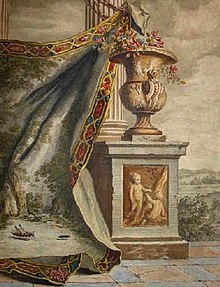
Back الجندب والنملة Arabic La cigarra y la formiga AST La cigala i la formiga Catalan Die Ameise und die Heuschrecke German La cigarra y la hormiga Spanish Inurria eta txirrita Basque Muurahainen ja heinäsirkka Finnish La Cigale et la Fourmi French A cigarra e a formiga Galician הצרצר והנמלה HE
| The Ant and the Grasshopper | |
|---|---|
 The Grasshopper begs at the Ant's door. Art by Charles H. Bennett (1857). | |
| Folk tale | |
| Name | The Ant and the Grasshopper |
| Also known as | The Grasshopper and the Ant (373 in Perry Index of Fables) |
| Aarne–Thompson grouping | ATU 280A (The Ant and the Cricket) |
| Region | Greece |
| Published in | Aesop's Fables, by Aesop |

The Ant and the Grasshopper, alternatively titled The Grasshopper and the Ant (or Ants), is one of Aesop's Fables, numbered 373 in the Perry Index.[1] The fable describes how a hungry grasshopper begs for food from an ant when winter comes and is refused. The situation sums up moral lessons about the virtues of hard work and planning for the future.[2]
Even in Classical times, however, the advice was mistrusted by some and an alternative story represented the ant's industry as mean and self-serving. Jean de la Fontaine's delicately ironic retelling in French later widened the debate to cover the themes of compassion and charity. Since the 18th century the grasshopper has been seen as the type of the artist and the question of the place of culture in society has also been included. Argument over the fable's ambivalent meaning has generally been conducted through adaptation or reinterpretation of the fable in literature, arts, and music.
- ^ Ben Edwin Perry (1965). Babrius and Phaedrus. Loeb Classical Library. Cambridge, MA: Harvard University Press. pp. 487, no. 373. ISBN 0-674-99480-9.
- ^ Brewer's Concise Dictionary of Phrase and Fable, London reprint 1992, p. 36